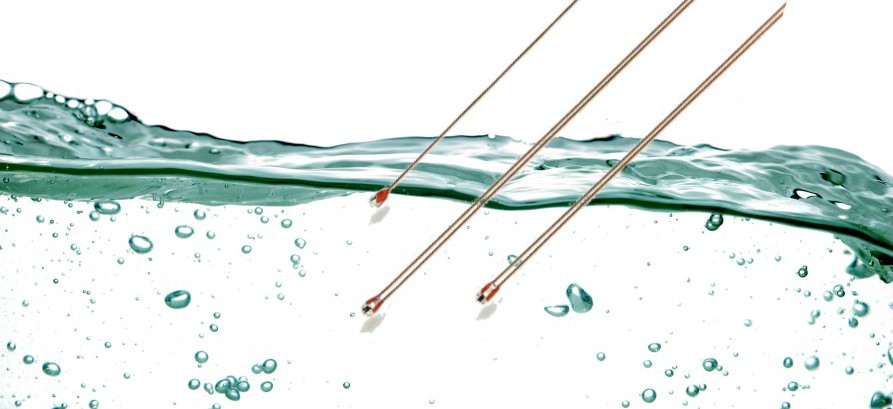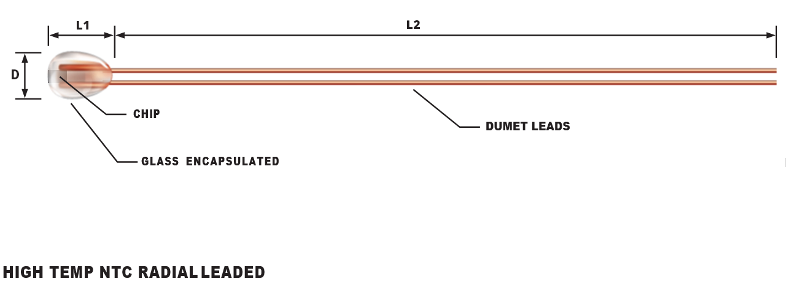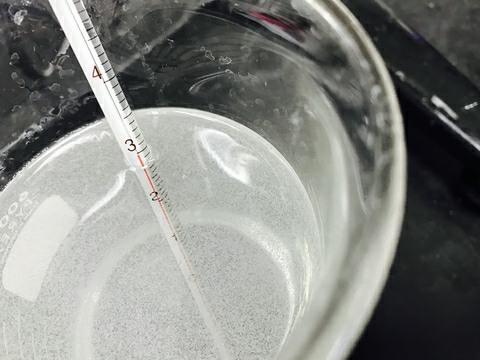In this application note, we talk about the Immersion Stem Effect and how immersion depth, temperature range, along with a proper fit and the geometry of the sensor can impact the accuracy of a temperature measurement.
We associate the Immersion Stem Effect with applications that involve either a liquid or gas environment, and it happens because when you immerse a temperature sensing probe into a gas or liquid, it creates a new thermal conductive path caused by the stem of the probe. Thus, heat is conducted away from the sensing tip via the probe’s stem to the outer atmosphere.

A concern is that it’s likely this phenomenon will cause the tip of the temperature sensing probe to measure a temperature that is different than the surrounding gas or liquid. Another concern is the depth of the immersion.
If the temperature sensor is immersed either too deep or not deep enough, there is a possibility of an inaccurate temperature measurement as a result. Since this is a naturally occurring phenomenon, how can you be sure that you are getting the most accurate temperature measurement?
Use the List Below to Help You to Reduce or Eliminate the Immersion Stem Effect
Here, you’ll find some useful tips and guidelines that will help you achieve the best results possible when faced with measuring temperature.
1. What’s in Your Temperature Sensor?
Understanding the geometry of your selected temperature sensor probe also plays a critical role in achieving accurate temperature measurements while reducing the possibility of immersion stem effect. We supply a data sheet for each component that we manufacture, which lists all electrical and mechanical specifications including materials used.
Learn more about our DG series of glass encapsulated NTC thermistors.

This information can help you determine the most efficient immersion depth for your application. Should you not be able to locate a piece of information on the data sheet, contact us, and we’ll help you determine if that information is, in fact, pertinent to your situation.
2. A Proper Fit
Temperature sensing probes rely on the ability of their surrounding environment to convey their temperature to the sensing element. Thus, it’s important to know that if you are attempting to measure air; air also acts as an efficient thermal insulator, which can impact the accuracy of your measurement.
One way to eliminate this problem is to reduce the air-gap by ensuring that the probe makes a good thermal contact with the temperature source. If the probe does not make good contact, the differential in the air-gap is apt to cause the temperature measurement to be inaccurate.
3. Temperature Range
The temperature range of a given temperature sensor probe can impact the accuracy of a measurement particularly if the probe is either short or irregular in shape. In other words, the further the distance between ambient air and the temperature of interest, the more likely you will experience a “Stem Conduction” or Heat-Sink” effect. And you can be sure that this will have an adverse effect and alter the accuracy your temperature measurement.
And, as you know, a heat-sink could be an environment or an object that can absorb and dissipate heat from other objects using thermal contact whether the contact is radiant or direct.
As an example, imagine that one end of the probe has a temperature of 500 ˚F or 260 ˚C, and the handle or the affixed portion of the probe is in ambient air. The handle or fixed portion of the probe will act as a heat-sink; possibly altering the accuracy of the temperature measurement that you were taking.

4. Immersion Depth Best Practices
Although an acceptable immersion depth varies depending on your unique situation, for most industrial temperature calibration applications, you can apply the formula below.
Empirical Formula to Calculate Immersion Depth
Formula: D=diameter X 15 inches + Length = Immersion Depth
Example Calculation Given Information:
If the temperature probe that you’ll be using has a diameter of .250 inches but has an internal sensor length of 1 inch, you would need to immerse the probe to a depth of at least 4.75 inches to validate this measurement, use the formula above.
More on Glass Encapsulated Thermistors




